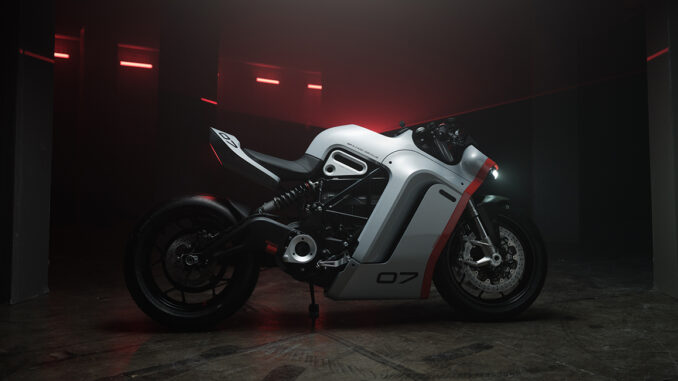
Motorcyclists have long loved their noisy, gas-powered machines that allow them to ride long distances on highways and remote roads with few fueling stops. Now, in a nationwide first, California is planning new rules that ramp up sales of zero-emission motorcycles in its quest to clean the air and battle climate-warming gasses.
The regulations would impose a credit system for manufacturers so that 10% of motorcycles sold in California would be zero-emissions in 2028 and 50% in 2035, according to the state Air Resources Board. At the same time, a tighter standard for new gas-powered motorcycles would ratchet down their emissions for the first time in more than 25 years.
Under the proposed rules, more than 280,000 new electric or hydrogen motorcycles would be sold in California by 2045 — about eight times more than the total on its roads now. Electric motorcycles make up only 1% of current motorcycle sales.
Motorcycles are more often used for recreation than daily commutes, and they collectively emit far less pollution than gasoline-powered cars and diesel trucks. But a mile driven in a gas-powered motorcycle emits far more pollutants than a mile in a new gas-powered car — for the reactive gases that form smog, it’s a whopping 20 times more per mile.
California has the worst smog in the nation and unsafe levels of dangerous fine particles, and air-quality officials say no source can be left unregulated: All vehicles powered by fossil fuels need to be cleaned up and transitioned to zero-emissions.
State officials hope more motorcyclists will be interested in the benefits that battery-powered motorcycles have to offer — low fueling costs and less maintenance.
But many motorcyclists point out California’s inadequate network of public charging stations and the limited range of electric models that are unsuitable for long-distance rides. They worry that the rule will limit the number of bikes they can choose from in the future. Others say it could fill an untapped market for urban motorcyclists interested in fast bikes for short commutes.
“There is no infrastructure for electric vehicles,” Michael DiPiero of the American Brotherhood Aimed Towards Education of California, which represents motorcyclists, said in written comments to the air board. “We cannot support the needs we currently have for electricity as it is.”
Rob Smith, a motorcyclist from Santa Monica, owns an electric car and considers himself an environmentalist. But he’s not ready to switch to electric motorcycles — and he doesn’t think most motorcyclists are either. They’re expensive, silent and have top ranges of about 100 miles.
“I do think it’s the future, I just don’t know about that timeline,” Smith said of the Air Resources Board’s proposal. “This is going to just hit a niche. Can you get to 50% with just that niche?”
Harley Davidson and the Motorcycle Industry Council, a group that represents manufacturers, didn’t respond to a request for comment about the proposed rules.
State officials said the regulation strikes a balance by moving toward electrification of motorcycles and catching up with European standards for gas-powered motorcycles yet still allowing California consumers to have a range of choices.
“We realized we couldn’t push to 100% because there will probably be some circumstances where zero-emission motorcycles won’t have access to infrastructure to plug up their bikes,” said Annette Hèbert, the air board’s deputy executive officer who oversees mobile source rules at its Southern California office.
Motorcycles make up less than half of 1% of all vehicle miles traveled in California. But even though they’re a “very small part of the state’s overall transportation sector,” they contribute an “outsized portion of smog-forming pollutants,” air board officials said.
“Motorcycles (emissions) may look small when taken by themselves, but when you consider the additive effect to all those other small sources together, you can see why we’ve got to hit every little piece,” Hèbert said.
Californians breathe some of the nation’s unhealthiest air and vehicles account for the majority of that pollution. The Los Angeles basin has for decades topped the list of cities with the worst ozone, a key ingredient of smog, according to the American Lung Association. Ozone and particle pollution can trigger asthma and heart attacks, as well as other diseases.
The motorcycle regulation would lead to an estimated $649 million in savings from reduced mortality and avoided hospitalizations and illnesses associated with motorcycle emissions, according to the Air Resources Board.
